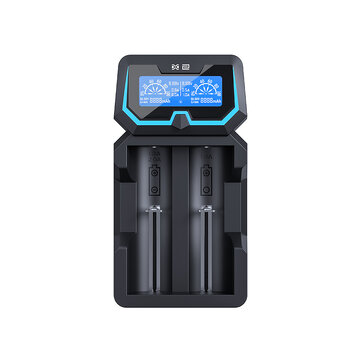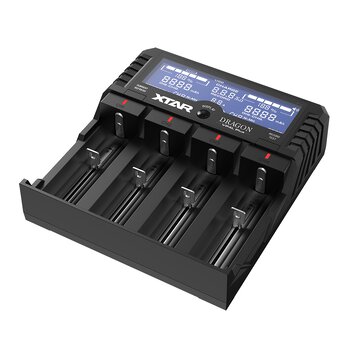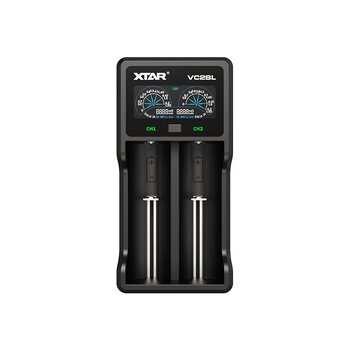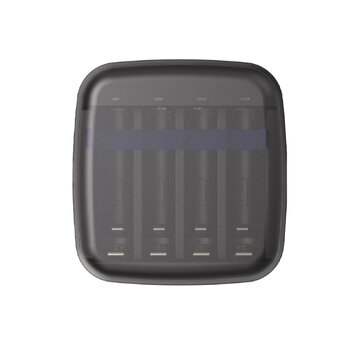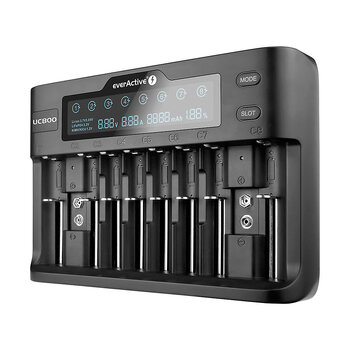Professional, compact processor/Power Bank charger
Xtar PB2S Blue
For Li-ion batteries in sizes 18650/20700/21700/26650

| • Automatically selected charging current 2x 1A/1X 2A • Two USB-TYPA and TYPE-C (IN/OUT) outputs • Two independent charging channels + built-in balancer • Powered by USB TYPE C socket with QC 3.0 and PD 3.0 • Compact size-Easy to carry • Magnetic Charging compartment Cover • Reactivation function of deeply discharged cells • Protection: Short-circuit, thermal, reverse polarity |
In a small enclosure, a fully professional processor charger with Power Bank function is concealed with a three-stage charging process TC/CC/CV. It loads 3.6/3.7 v Li-ion cells with any capacity in size 18650/20700/21700/26650. The intelligent built-in balancer controls the charging and discharge process. It significantly extends the life of the cells. The charger always starts by charging a more discharged cell. After reaching a similar charging level, it starts to charge both batteries simultaneously. The same happens in case of discharge. The charger starts unloading from the more charged cell, when the level of the charge is leveled, it begins to unload both batteries simultaneously (Power Bank function).
What Is THE TC/CC/CV charging method? It is a three-step process of loading Li-ion cells to keep the cell in good condition by charging the right current at each stage and completing the charging process at the right moment.
The various stages of the TC/CC/CV process are:
• TC phase: Cells discharged below 2, 9V are ' awake ' to lower currents.
• CC phase: When 2, 9V is reached, the cell is loaded with a constant current of 2x2A/2x1A/1x2A.
• CV phase: When the cell is already nearly charged, the charger switches to a decreasing current charge until it reaches a voltage of 4, 2V on the cell. After reaching 4, 2V the charging process is complete-the battery is fully charged.
Batteries with a voltage of 4, 1V or higher are treated by the charger as charged. To recharge such a full battery, please insert it into the charger before powering it in. When left in the charger, the charged batteries will be subjected to a natural self-discharge process. Charging will resume when the battery voltage drops below 4, 1V.
The Xtar PB2S Charger has a function of reactivating deeply discharged cells and cells with a Voltage Of 0v. Many chargers on the market are not able to charge such an acumenThe lators. Here with the help comes the charger Xtar PB2S, which in many cases allows you to ' resave ' such cells. Just insert a deeply discharged battery into the PB2S charger, as with normal charging, the charger detects the unloaded link and attempts to reactivate it.
Attention! Cells unloaded below a certain level are irreversible and reactivated may not be possible. Avoid too deep discharge of Li-ion batteries-this can lead to a significant reduction in their durability and capacity or to their total malfunction.
Chargers from other manufacturers can significantly increase the temperature of the cells being charged during charging. Excessive heating of the cells can cause them to wear more quickly. When designing the PB2S charger, Xtar went one step further from the competition, solving this problem easily: the power supply from an external power supply was applied. This ensures that the charging temperature in the PB2S battery rises by up to 15 degrees.
Supplied with the Xtar PB2S Charger We GET a USB type C Cable. The power supply is not included in the kit. Any charger with a USB socket, for example, is enough to power the charger. From your phone or a computer with a free USB port. The recommended charger supports QC 3.0/PD 3.0 to take full advantage of the charger. It is possible to use a charger with less power but in this case the charging time will be prolonged.
| Product data | |
| Manufacturer | Xtar |
| Charger Model | PB2S |
| Supported Battery types | Li-Ion 3.6 batteries-3, 7V |
| Supported Battery Sizes | 18650/20700/21700/26650 |
| Maximum battery length | 70mm |
| Input voltage and Input current | Compatible with QC 3.0 and PD 3.0 (5V/2A | 9V/2A | 12V/1.5 A) |
| Power connector | TYPE C |
| Power supply included | Not |
| Recommended power supply | Minimum 5V 2A, Recommended QC 3.0/PD 3.0 compliant |
| Charging method | Processor-controlled TC/CC/CV |
| Charging In the CC phase | 2x 2A/2x 1A/1x 2A |
| End Voltage Loading | 4, 2V ± 0, 05V |
| Current of terminations | 120mA |
| Additional functions | Reactivation of deeply discharged cells and cells 0V |
| Security | |
Short Circuit
Before the battery is reversed
USB TYPE C-TYPE A Cable,




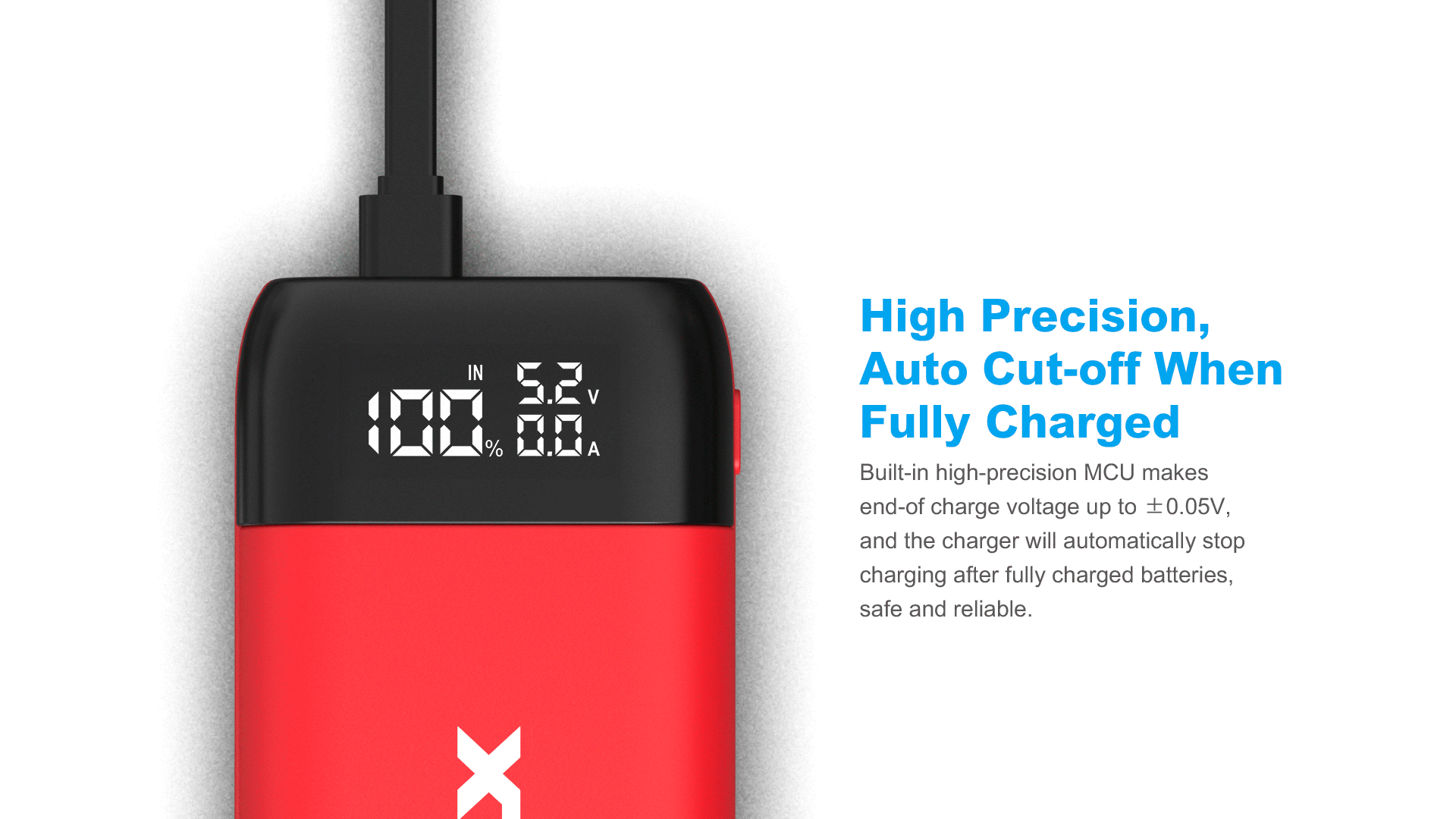








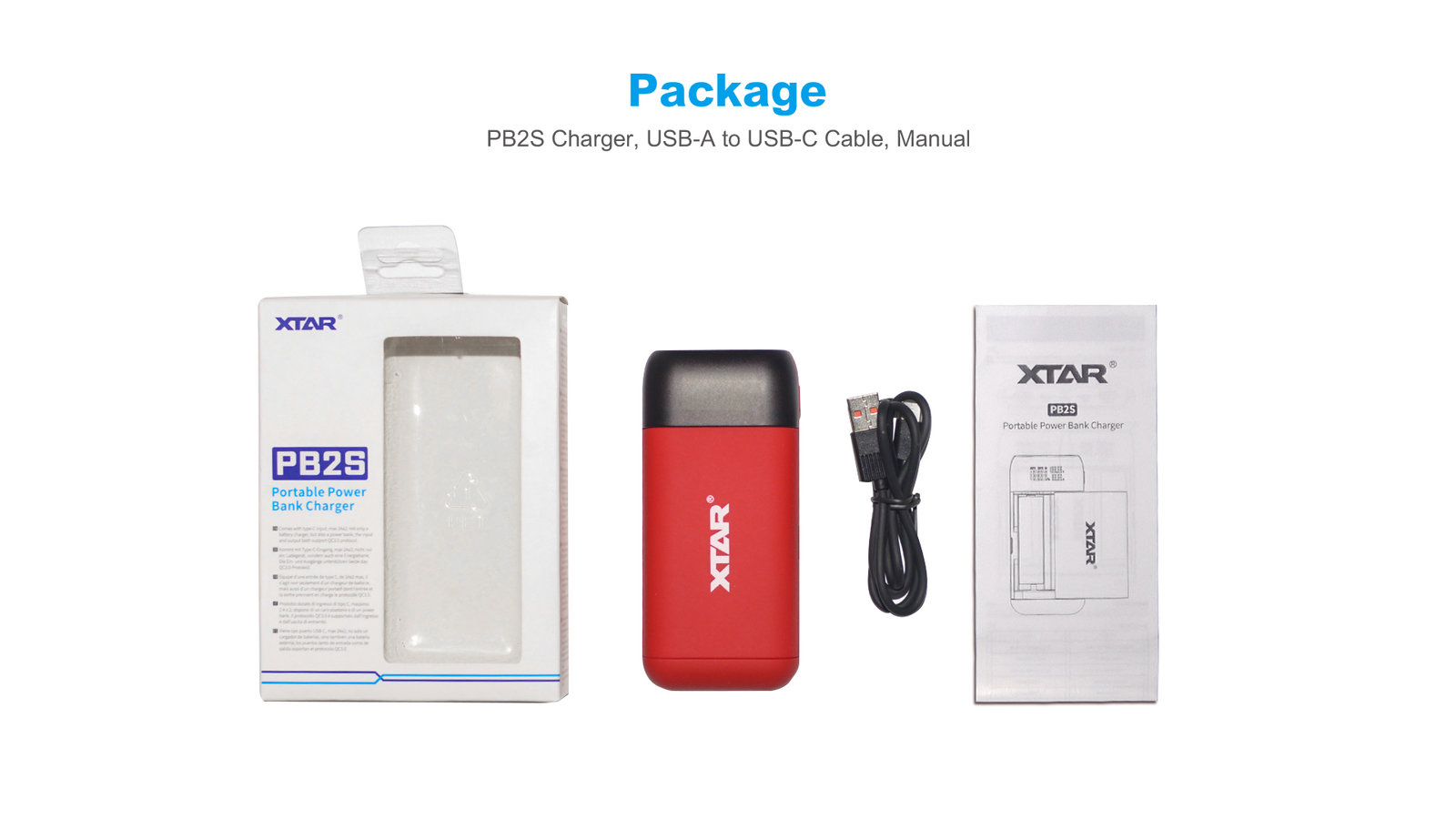
- Li-ion batteries 3.6-3.7V, unprotected
- Li-ion batteries 3.6-3.7V, protected (with PCM/PCB)
- 5V DC(Kabel USB-C w zestawie. Brak zasilacza w zestawie.)
- Processor-controlled TC/CC/CV for Li-ion
- 2x 2A / 2x 1A / 1x 2A
- 4.2V ±0.05V
- Reactivation of deeply discharged cells and 0V cells
- Power bank function
- Before the charger overheats
- Against overload / short circuit
- Before reverse polarity of cells
- Charge
- PB2S charger
- USB Type-C to Type-A Cable
- Li-ion batteries 3.6-3.7V, unprotected
- Li-ion batteries 3.6-3.7V, protected (with PCM/PCB)
- 5V DC(Kabel USB-C w zestawie. Brak zasilacza w zestawie.)
- Processor-controlled TC/CC/CV for Li-ion
- 2x 2A / 2x 1A / 1x 2A
- 4.2V ±0.05V
- Reactivation of deeply discharged cells and 0V cells
- Power bank function
- Before the charger overheats
- Against overload / short circuit
- Before reverse polarity of cells
- Charge
- PB2S charger
- USB Type-C to Type-A Cable
5th Floor, No.77 Xinhe Rd, Shangmugu
518000 Shenzhen
Chiny
Email: info@xtar.cc
Geodetów 24
80-298 Gdańsk
Polska
Email: contact@baltrade.eu


